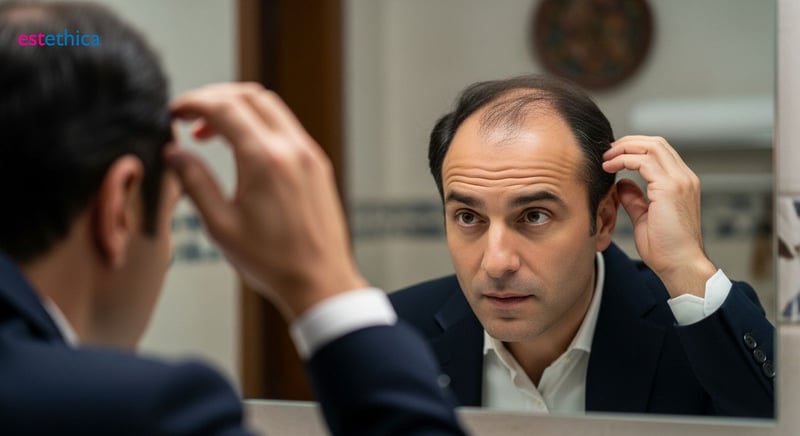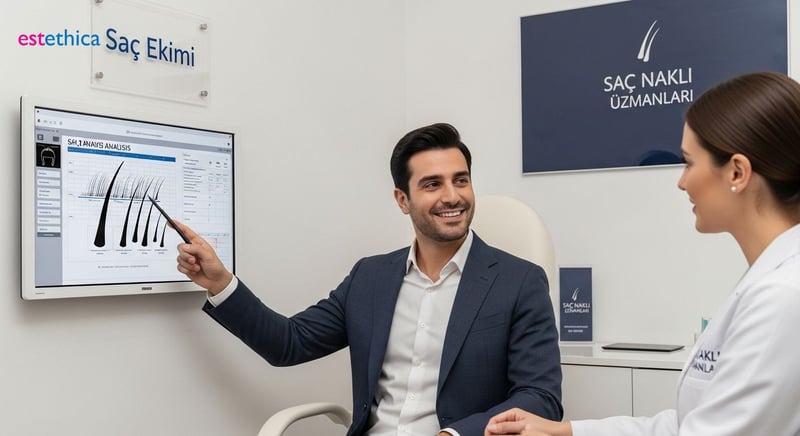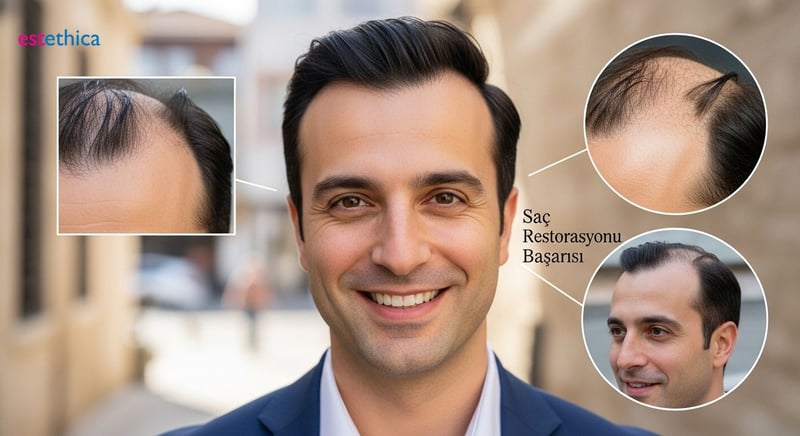Hair Transplant: Your Guide to Natural Hair Restoration
A comprehensive guide to hair transplant procedures, including FUE and DHI methods, hair restoration techniques, and understanding the recovery process for optimal aesthetic hair solutions.
Understanding the Hair Transplant Process Details
Embarking on a journey to restore hair density involves a sophisticated and meticulous procedure. The hair transplant process details begin long before the actual transplantation. It all commences with an in-depth consultation. During this vital first step, specialists carefully assess the extent and pattern of your hair loss. This evaluation is crucial for determining your suitability for the procedure and for crafting a personalized treatment plan. Understanding your specific needs allows for the development of an optimal strategy to achieve natural-looking and effective results. This initial assessment sets the foundation for the entire hair restoration journey.
The Core Procedure and Techniques
At the heart of any successful hair transplant lies the precise harvesting and implantation of hair follicles. Healthy follicles are meticulously extracted from a donor area, typically located at the back or sides of the scalp where hair is genetically resistant to thinning. These harvested grafts are then delicately transplanted into the recipient areas experiencing balding or thinning. The success of this delicate transfer hinges on the skill and precision of the surgical team. Key considerations include the careful design of the hairline to ensure it appears natural, the density of the transplanted follicles, and the angle at which each graft is placed. These elements are paramount in achieving an aesthetically pleasing and seamless outcome that blends harmoniously with your existing hair.
Modern advancements have significantly refined the techniques used in this field. Procedures like the FUE hair transplant methods (Follicular Unit Extraction) are highly regarded for their minimally invasive nature and their ability to produce excellent results. The precision involved in these advanced hair transplant process details ensures minimal scarring and a quicker recovery period compared to older methods. For those seeking detailed information on the overall journey and what to expect, exploring complementary resources like Hair Transplant: Restore Your Hair with Saç Ekimi can provide valuable insights into the comprehensive approach to hair restoration.
Achieving Natural and Lasting Results
The ultimate goal of a hair transplant is to provide a permanent and natural-looking solution to hair thinning. The meticulous attention paid to the technical aspects of the procedure, from follicle selection to implantation angles, directly contributes to the final aesthetic outcome. While the FUE hair transplant methods are a popular choice, the specific approach is always tailored to the individual's unique hair loss characteristics and desired results. Understanding these intricacies is key to appreciating the effectiveness and artistry involved in modern hair transplant process details. A well-executed hair transplant not only restores lost hair but also significantly boosts confidence and self-esteem, making it a transformative option for many.

Exploring FUE Hair Transplant Methods
Follicular Unit Extraction, commonly known as FUE, represents a significant advancement in the field of hair restoration. This modern technique is highly regarded for its minimally invasive approach, offering a less discomforting experience and a more natural aesthetic outcome for individuals seeking to address thinning hair or baldness. Unlike older methods that involved linear scar formations, FUE involves the meticulous extraction of individual hair follicles directly from the donor area. This is achieved using specialized micro-punches, typically ranging from 0.7mm to 1.0mm in diameter. The precision of this method ensures that each graft is harvested with care, leaving behind minuscule, often imperceptible scars that are easily concealed, even with short hairstyles.
The FUE Extraction and Implantation Process
The core of the FUE hair transplant process lies in its two primary phases: extraction and implantation. Once the donor hair—usually from the back or sides of the scalp where hair is genetically resistant to thinning—is harvested using the micro-punch technique, these individual follicular units are prepared for implantation. A skilled surgeon then creates tiny recipient sites in the balding or thinning areas of the scalp. The extracted grafts are carefully placed into these sites, paying close attention to the angle, direction, and density to mimic natural hair growth patterns. This meticulous attention to detail is crucial for achieving a natural-looking result. Many patients find that the FUE hair transplant offers a remarkable improvement in their appearance and self-confidence.
The advantages of FUE are numerous. Its minimally invasive nature means a significantly reduced recovery period compared to older techniques. Patients can typically return to their normal activities much sooner, often within a few days. Furthermore, the FUE hair transplant methods provide a high degree of flexibility. Because individual follicles are extracted, it allows for the harvesting of a larger number of grafts if needed, and it is particularly well-suited for patients who desire shorter hair lengths post-procedure, as the donor area scarring is minimal and scattered. Understanding these FUE hair transplant methods is key to appreciating the advancements in achieving aesthetic hair solutions and improving the overall Hair Transplant Surgery: Restore Your Natural Hairline. The intricate nature of the hair transplant process details is what ensures such desirable outcomes.
When considering different approaches, exploring the detailed hair transplant process details associated with FUE is essential. The ability to achieve natural-looking density and a seamless integration with existing hair is paramount. The refined techniques employed in FUE ensure that the final result is not only visually appealing but also sustainable. Patients often report high satisfaction levels due to the minimal scarring and swift return to daily life. The sophisticated execution of the hair transplant process details makes FUE a leading choice for many.
Evaluating DHI Hair Transplant Results
Direct Hair Implantation (DHI) stands as a sophisticated advancement within the realm of surgical hair restoration, building directly upon the foundational techniques of Follicular Unit Extraction (FUE). When considering the outcomes of this method, practitioners and patients alike often highlight the exceptional density and remarkably natural-looking appearance that DHI procedures can achieve. The key differentiator lies in its specialized implantation device, often referred to as an implantation pen. This precision instrument grants the surgeon unparalleled control over critical parameters for each transplanted follicle, including its precise depth, optimal angle of insertion, and the natural direction of growth relative to surrounding native hairs.
This meticulous control afforded by the DHI technique is instrumental in minimizing trauma to both the recipient scalp area and the donor sites. By reducing physical stress on the scalp, the viability of the implanted grafts is often enhanced, potentially leading to improved graft take rates and a generally smoother, faster healing trajectory compared to some older methods. For individuals actively seeking immediate and aesthetically pleasing solutions to address thinning hair or baldness, understanding the potential dhi hair transplant results presents a very encouraging avenue towards achieving significant and satisfying hair regrowth. The ability to create a densely packed and natural-looking hairline is a primary draw for those opting for this advanced procedure.
Key Advantages of DHI Implantation
The DHI hair transplant process is particularly lauded for its precision. Unlike some other techniques where incisions are made first and then grafts are placed, DHI integrates both steps. The implantation pen can simultaneously create a micro-opening and insert the follicle. This dual action minimizes the time grafts spend outside the body, thus preserving their vitality. Furthermore, the precise angling and depth control allow for a more uniform distribution and natural pattern, crucial for achieving aesthetically superior outcomes. When comparing the various fue hair transplant methods, DHI often stands out for its minimally invasive nature and the refined control it offers surgeons. Evaluating the hair transplant process details, especially the implantation phase, reveals why DHI is frequently chosen for its ability to deliver dense and natural-looking results.
Comparing DHI with Other Grafting Techniques
While both FUE and DHI involve extracting individual follicular units, the implantation phase is where they diverge significantly. Traditional FUE often involves making small slits in the scalp with a blade or needle before manually inserting the grafts. DHI, conversely, utilizes the specialized pen to directly implant each follicle, offering superior control over placement. This can be particularly beneficial in recreating a natural hairline and achieving higher density in smaller areas. Understanding these nuances is vital when reviewing the hair transplant process details. Below is a table highlighting some of the key differences:
The detailed consideration of the hair transplant process details is paramount for anyone considering surgical intervention. Each fue hair transplant methods approach offers distinct advantages, and DHI’s refined implantation technique positions it as a leading choice for achieving dense, natural-looking hair growth. The careful evaluation of potential hair transplant outcomes should always involve understanding the specific method employed and its unique benefits.

Comprehensive Hair Loss Treatments & Restoration
While surgical procedures like FUE and DHI are highly effective for permanent hair replacement, the journey to regaining a full head of hair often involves a broader strategy. A holistic approach acknowledges that various interventions, both surgical and non-surgical, can play a crucial role. For individuals experiencing thinning or seeking to optimize the outcomes of a hair transplant, a range of complementary therapies are available. These can include topical applications, such as minoxidil, known for stimulating hair growth, and oral medications like finasteride, which help to slow down further hair loss. Furthermore, advancements in technology have introduced low-level laser therapy (LLLT) devices, which can be used at home to encourage follicle health and potentially improve the density of existing hair.
Integrating Non-Surgical Therapies
The synergy between surgical and non-surgical interventions is a cornerstone of modern hair restoration. Often, these non-surgical options are recommended by specialists to prepare the scalp before a hair transplant procedure or to maintain the longevity of the transplanted grafts. Understanding how these treatments work in conjunction with techniques like the FUE hair transplant methods is key to developing a personalized plan. Medical professionals will assess the specific type and extent of hair loss to determine the most suitable combination of therapies. This might involve starting topical treatments months in advance or continuing them post-surgery to maximize results and address any remaining thinning areas. The goal is not just implantation but comprehensive management of hair health.
Navigating the Recovery and Achieving Lasting Results
A critical component of any successful hair transplant is diligent post-operative care. Understanding what is the hair transplant recovery process involves is paramount. This phase requires patience, as the initial healing gives way to gradual hair growth, which can take several months to become noticeable. Adhering strictly to the surgeon’s instructions regarding washing, avoiding strenuous activity, and protecting the scalp is essential for optimal graft survival and healing. While FUE and DHI are advanced FUE hair transplant methods offering excellent results, the recovery period is a crucial phase where the body works to integrate the new follicles. Combining these surgical interventions with a well-managed non-surgical regimen, guided by expert advice, provides the most effective pathway toward achieving significant and enduring hair regrowth, ultimately boosting confidence and overall well-being.

Mastering FUE and DHI Hair Transplant Techniques for Natural Restoration
Expertise in Follicular Unit Extraction (FUE) and Direct Hair Implantation (DHI) signifies a deep understanding of modern hair transplant processes. These advanced methods allow for the precise harvesting and meticulous implantation of hair follicles, ensuring a natural-looking and dense result.
Our approach focuses on the detailed hair transplant process details, including the core procedure and techniques that lead to lasting aesthetic hair solutions. We prioritize achieving natural and long-lasting results through specialized techniques tailored to individual hair loss patterns.
Specialists dedicate themselves to mastering sophisticated aesthetic hair solutions, continuously refining their skills in hair restoration. This commitment ensures that every procedure, from FUE extraction to DHI implantation, is executed with utmost precision and care.
The comprehensive hair loss treatments and restoration strategies employed are grounded in extensive knowledge and practical application, positioning us as authorities in the field of natural hair restoration.
Transparent Hair Transplant Process: Cost, Recovery, and Results
Understanding the hair transplant cost is part of our commitment to transparency, allowing patients to make informed decisions about their investment in natural hair restoration. We provide clear breakdowns of expenses associated with the best hair transplant procedures.
The hair transplant recovery timeline is meticulously managed, with detailed guidance provided to ensure a smooth and efficient healing process. This focus on post-procedure care is vital for achieving the desired aesthetic hair solutions.
What is a hair transplant? It's a life-changing procedure when performed by a skilled hair transplant specialist. Our patients' positive experiences and visible results underscore the trust placed in our expertise and comprehensive approach to hair loss treatments and restoration.
The modern hair transplant journey is designed for maximum patient comfort and minimal disruption, solidifying our reputation as a trusted provider of natural hair restoration solutions.